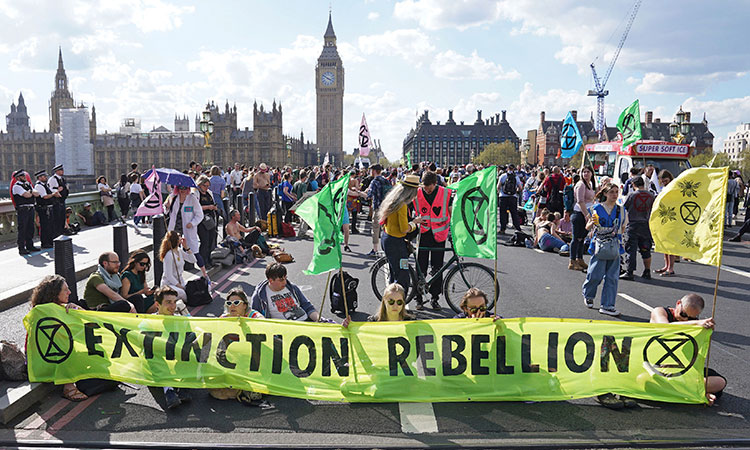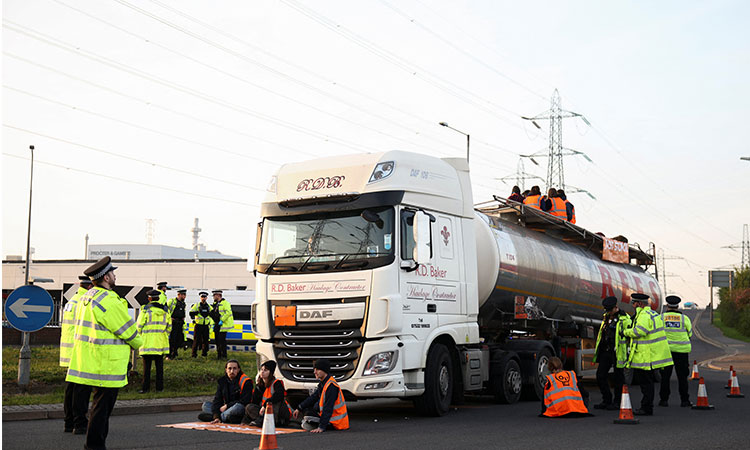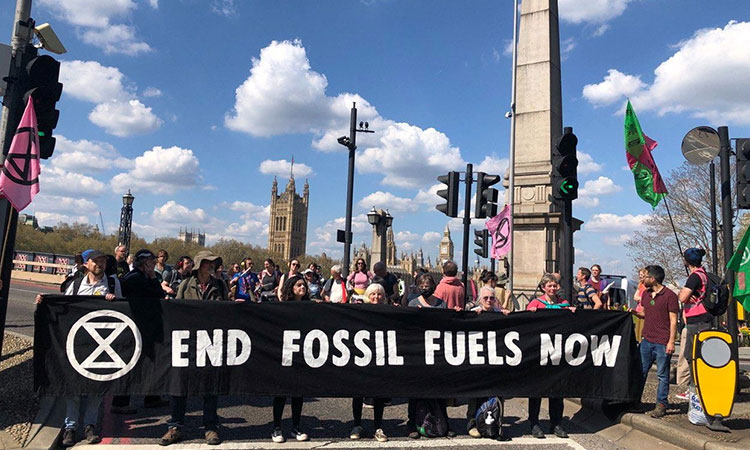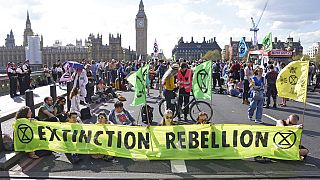The Apple TV+ show is a road map of worker organizing.
/cdn.vox-cdn.com/uploads/chorus_image/image/70729820/ATV_Severance_Photo_010804.0.jpg)
You may not have heard, but people don’t like their jobs.
Americans are quitting in droves. Companies paying poverty wages are having a hard time finding and retaining workers. Highly paid digital workers don’t want to return to the office. The pandemic stripped the padding that made white-collar jobs bearable — lunches with coworkers, Starbucks runs, breaks in fresh air — leaving only the rotten core of actual work behind.
Setting aside generalities, consider your own work. Does it suck? Is it exhausting? Is it meaningful? Or does it detract from the parts of your life that bring meaning? Do you have a good job, or is it only good compared to the worse jobs you could be forced into?
Enter Severance, a show on Apple TV+ starring Adam Scott as Mark. Mark has voluntarily undergone a procedure known as severance, which means he has chosen not to remember what happens during his workday. It’s an intoxicating premise. If you were paid handsomely to do it, why wouldn’t you?
Mark works at Lumon, a powerful corporation with mysterious intent and one of the most ghoulish dystopian settings on the small screen. Lumon offers the most in-demand perk of all: work-life balance. His job self, his “innie,” spends his days sorting and filing numbers in Lumon’s Macrodata Refinement Division, for no reason that he knows of. His “outtie” is blissfully unaware of the pointlessness of his innie’s days, though the complete removal from work hasn’t exactly translated into happiness for Mark. (Spoilers follow for Severance.)
THAT’S WHAT MAKES WORK PALATABLE: YOUR COWORKERS BECOME YOUR FRIENDS AND, GIVEN ENOUGH TRAUMA BONDING, YOUR COMRADES
Mark and his severed coworkers make an ideal workforce to be exploited. With no personal memories and no context of the outside world, attempts to understand their jobs and surroundings are childlike and naive. But Lumon can’t stop coworkers from caring about each other: Mark empathizes with new hire Helly (Britt Lower); Irving (John Turturro) falls in love with Burt (Christopher Walken) from Optics and Design, abandoning his zealotry for the Handbook in the process; Dylan (Zach Cherry) accidentally discovers his outtie’s fatherhood, radicalizing him to help his coworkers escape instead of working late to win chintzy prizes.
Severance is a sneaky paean to worker solidarity, and the heart of the show is a metaphor for how workers come together in the face of oppression. Mark’s compliance is first shaken by the expulsion of his work bestie, Petey (Yul Vazquez). The loss awakens a quiet recalcitrance because that’s what makes work palatable: Your coworkers become your friends and, given enough trauma bonding, your comrades.
While the workplace sitcom has been a staple of TV for decades, no show about work has captured quite so accurately how damaging work can be in real life. You don’t work at the Cheers bar, and you don’t work for Leslie Knope. You are not Jim Halpert; most likely, you are Stanley Hudson, painfully aware of the stupidity of your labor.
Lumon may represent a particularly hellish version of the office, but it doesn’t have to stray far from reality to depict the cruelty of work. The workplace is already dystopian. Entire sectors of the economy are based on a large pool of low-wage workers, aided by state governments run in large part by business owners. In America, 44 percent of workers — 53 million people — work in low-wage jobs that are physically exhausting and arduous. Semi-employed gig workers live precariously while their employers fight tooth and nail so they won’t be classified as their employees. Better-off white-collar workers face their own set of harms. Like the members of the Macrodata Refinement Division, we’re all dealing with hardship, some of which is the direct result of our jobs.
Because as we know in our bones and Severance makes clear, we are our jobs, every shitty minute. We speak of “work-life balance” because we know work is opposed to life. When Mark tells Helly he just hopes he has things he cares about outside of Lumon, it’s because he knows his job is not one of those things. For all the fantastical elements in Severance, the only real science fiction is the consciousness-searing technology facilitating ever-greater worker compliance. The suffering at work, and the characters’ futile attempts to separate work from everything else, is the lived reality of millions of us in the real world.
:no_upscale()/cdn.vox-cdn.com/uploads/chorus_asset/file/23377248/ATV_Severance_Photos_010605.jpg)
The pandemic only highlighted the brutality of our jobs in the current extractive labor setup we call a capitalist democracy. We learned that we’re either essential or not. Unless you’re a doctor, “essential” mostly means people working in low-wage, dangerous, punishing jobs necessary to keep the economy going, like farmworkers, bus drivers, and cashiers. There seems to be a direct correlation between how necessary your job is and how low you are paid and indecently you are treated.
On the flip side are those working inessential jobs, or what the anthropologist David Graeber calls “bullshit jobs.” “The ruling class has figured out that a happy and productive population with free time on their hands is a mortal danger,” Graeber writes in his essay. Macrodata Refinement is a perfect example of a job that doesn’t really need to be done, and one brought about by Severance creator, writer, and showrunner Dan Erickson’s real-life temp job entering data.
It’s perhaps not a coincidence that Erickson was able to make a show out of the “profound psychological violence” (Graeber’s words) of a meaningless job, or that that show could double as an ingenious depiction of workplace organizing. TV workers are part of a formidable union with a history of militancy that brings strong protections. (TV writers are represented by the Writers Guild of America West; as an editorial employee of Vox, I’m represented by their sibling, Writers Guild of America East.) There’s a reason the saying “an injury to one is an injury to all” has stuck around in the labor world, and Hollywood writers are especially good at using their collective power to secure better conditions for everyone in their industry.
In an interview with Inverse, Erickson states the themes of his show bluntly: “It’s about workers reclaiming power, which is obviously a brutal, ongoing human struggle. Workers are extremely powerful, but I think solidarity is one of the biggest challenges in that, especially when those in power try to divide in the ranks.” The best that can be said of the vast majority of jobs is that you may come to prioritize the value of your coworkers over the circumstances that brought you together, i.e., the meaninglessness of your shared toil. Severance is a road map of organizing, a revolution in progress, and it begins and ends with caring about your fellow worker, who in turn cares about you.
In Severance, Helly, newly severed and rebellious, represents the audience surrogate and an unadulterated reaction to all this, and perhaps what everyone’s reaction should be to spending their days doing pointless tasks for the profit of others: rage, repulsion, and determination to escape. Those are the seeds of worker organizing. People know their jobs are bad; it takes someone like Helly, or organizers who won the recent union drive at Amazon’s Staten Island, New York warehouse, to light a fire under their immiserated coworkers in order to do something about it.
The stakes are high for workers. While Jeff Bezos’s wealth is greater than the GDPs of more than half the world’s countries, employment at his company is so precarious and difficult that the high turnover rate is a feature of employment; routine injuries are a feature of employment; peeing in bottles is a feature of employment. “You’re not a person” — the message Helly’s outtie tells her innie — brutally epitomizes the loss of dignity and humanity we endure in the workplace.
A union cannot solve every problem workers face, but it wins us a seat at the table to determine at least some of the conditions of our working lives. I know this because I’ve organized a workplace. It was the single most meaningful thing I’ve done in my life because it led me to understand my power when working collectively with my coworkers, and because it materially improved the lives of many of us.
Media isn’t the only white-collar industry where unions are booming: Workers at nonprofits, museums, and even Big Tech are revolting against the norms that use their own drives against them. It’s much easier to get people to work long hours if you teach them they’re choosing to do it.
EVEN DEVOID OF THE CONTEXT OF THE OUTSIDE WORLD AND THEIR PERSONAL HISTORIES, EVEN WITHOUT KNOWING WHAT A UNION IS, THE WORKERS STILL REBEL
Similarly, Lumon gets workers to exploit themselves. They choose to undergo severance — if they don’t like it, they can quit! If there’s a lesson here, it’s that owners will do everything they possibly can to extract as much surplus value from workers as possible — especially under the guise of technological advances — and it’s up to the workers to stop it. The severance procedure is a funhouse mirror version of the ways real executives use technology to make work ever more dehumanizing in pursuit of ever-greater profits. At least on the severed floor, there’s hope, because even devoid of the context of the outside world and their personal histories, even without knowing what a union is, the workers still rebel.
We cannot ignore what happens to us at work, even if we’d like to, and even if our overseers do their best to facilitate the idea that our work lives are separate from the rest of our lives. “No one should be as invested in their boss’s bottom line as they are in their own life or happiness,” showrunner Erickson said in the Inverse interview. “But there are certain things we learn as humans, like empathy and self-worth, that I think we’re often discouraged from bringing to the workplace, to our own detriment. The less of ourselves we bring to work, the easier we are to exploit, or roped into immoral practices. But also we need that separation in order not to lose ourselves entirely.”
The benefit of exploring a topic like workplace organizing in a sci-fi story like Severance is that its outlandish premise allows its viewers some remove from the cultural baggage we see as entrenched and unchangeable. It’s a narrative that puts the brutality of work front and center, and through stories, we can learn that what seems impossible is not. Even in the most dystopian version of corpocratic America imaginable, workplace empathy and uniting in our common struggle triumphs.
/cdn.vox-cdn.com/uploads/chorus_image/image/70739268/1239668877.0.jpg)
/cdn.vox-cdn.com/uploads/chorus_image/image/70739213/GettyImages_143218786.0.jpg)
/cdn.vox-cdn.com/uploads/chorus_image/image/70743573/1239191516.0.jpg)
/cdn.vox-cdn.com/uploads/chorus_image/image/70743718/GettyImages_1169117045.0.jpg)
















